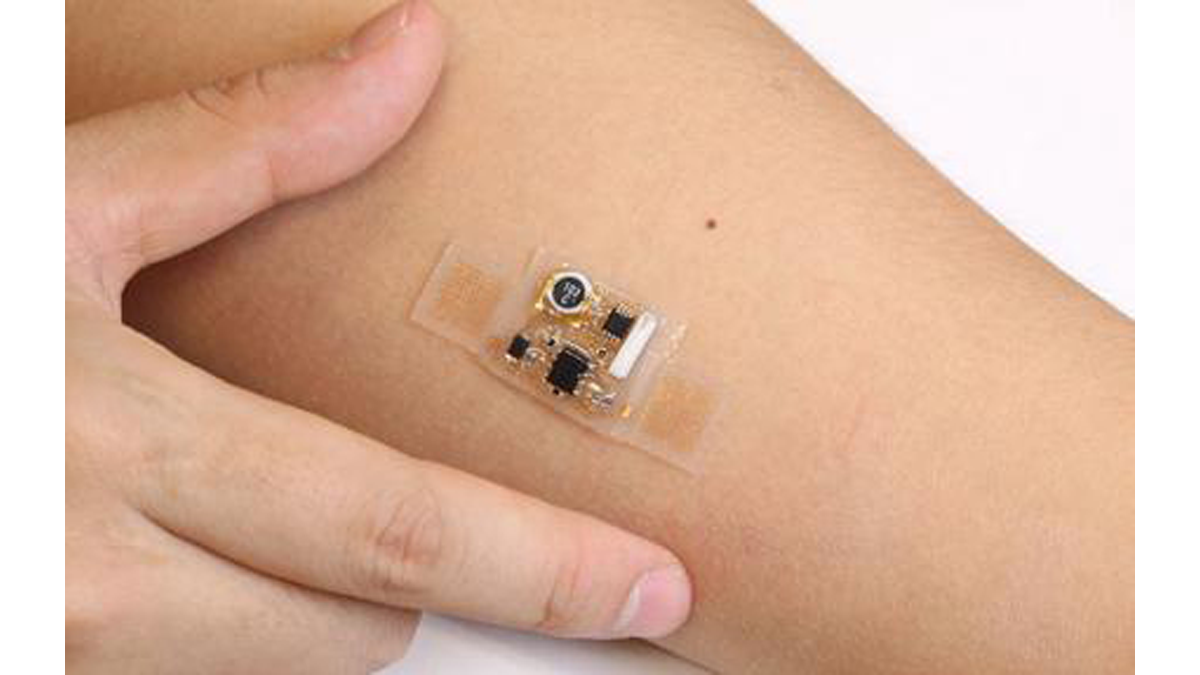Determining the state of our health has always been a matter of finding a way to monitor and measure the body’s most basic functions. Before instrumentation, visual indicators were used that allowed us to know, for example, what our body temperature should be, what a healthy pulse is, and what an acceptable respiration rate is.
Today, with an aging population more people now need some sort of portable health monitoring, which could take the form of devices that, among other things, dispense medication at regular intervals, stimulate the heart, or measure blood sugar levels and inject insulin. This article looks at medical- and fitness-sensor technology—contacted and contact-less, placed on the skin, subcutaneous, or internal—that now or soon will be available to design engineers. All parts, tools, and data referenced here can be found on the Digi-Key website.
Simple beginnings
The simplest form of a sensor is a transducer, which can be as basic as two different substances touching each other. The actual sensor element can be fabbed as a small discrete leaded component, or as part of a probe or electrode assembly. They can be as thin as a hair-like wire and can actually generate voltages themselves. Thermocouples are an example of voltage-generating sensor of dissimilar metals that creates voltages based on temperatures. Parts like the non-grounded Omron E52-CA15AYD32 4M, for example, measure temperatures using a K-type element with a 3.2 mm protective tube capable of skin mount or mounting in a stationary crevice.
Piezo effects can be taken advantage of to create energy from a tiny embeddable sensor when exposed to shock and vibration. A small, rather non-intrusive skeletal sensor could indicate too much physical trauma to a football player in real time to avert more serious injury. The miniaturizing of piezo sensors means they can now be weaved into textiles, bandages, or clothing. Sheet sensors like the TE Connectivity 2-1004347-0 are flexible, foldable, and can be cut to very specific states (Figure 1). A shoe insert for example, could determine if too much stress is being generated on downward steps to help diagnose back or joint issues.
Figure 1: Flexible and shapeable sensors like this sheet piezo sensor can be used on or inside clothing or shoes to measure stresses to joints and vertebrae.
While transducers are useful for picking up real-world conditions, they need to be calibrated, linearized, and compensated for drift and temperature effects. This is why transducer systems integrated with small, smart, and system-level electronics can make these devices into self-contained monitoring and reporting systems.
We are what we wear
Researchers and manufacturers are now looking at wearable medical and fitness devices for the masses. One place where active projects are underway is the University of Illinois where next-generation devices are being developed that can measure energy exertion, heart rate and variability, falls, skin temperature, and EEG/EKG signals (Figure 2). Worn like a disposable patch, these peel-and-stick sensors can wirelessly communicate to a hub or router that either performs the necessary processing or passes along data to a cloud or medical monitoring service. A local smartphone can be used as well.
Read more: Sensor Technology for Health and Fitness Applications

